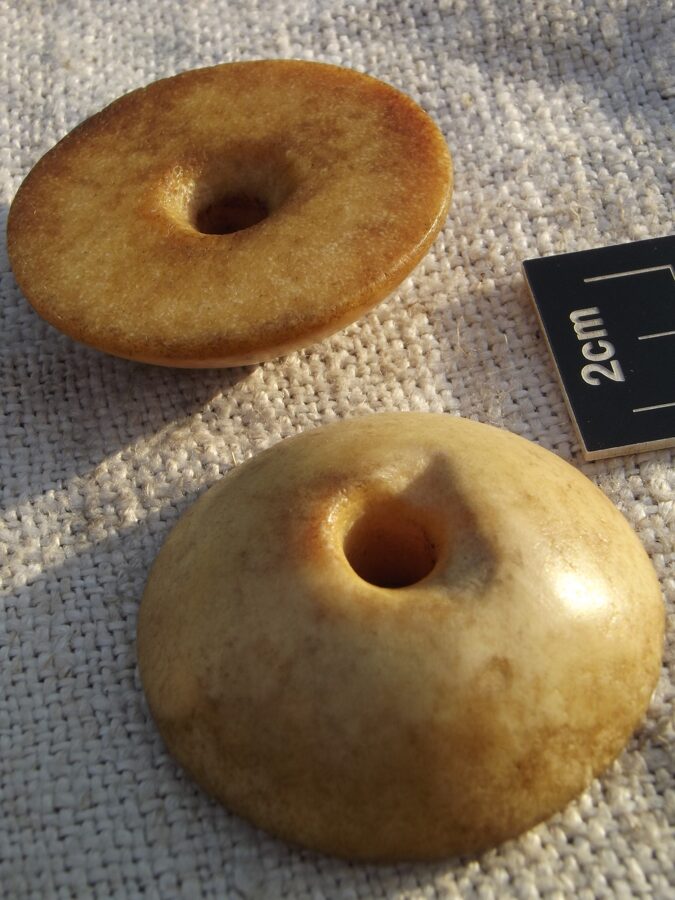Tools looking sweet
November 26, 2022 at 3:05 pm
Originally published on 21th of September, 2022.
https://www.facebook.com/theblackmarketofthewhitebones/posts/
Along different craftsmen also ''common men'' (and women) used to make some simple and useful everyday items from bone by themselves. Few typical examples of this medieval domestic production are bone needles, bone whistles, skates and flutes, and a specific kind of spindle whorls (things that require only a knife to produce).
These last ones are also the heroes of today's story.
This kind of whorls are made of a femur - head (femur being a thigh bone simply put) most often of cattle, sometimes also pig or other livestock.
As you might have observed the femur-head consists of very porous bone tissue that is richly filled with thick and greasy marrow. We have experimented in different ways during the years, but nothing acceptable came of it. If you try to clean the marrow out and try to get as neat a result as possible, you are left with a plume- light brittle, and useless bone shell. If you leave the marrow in, it slowly petrifies, but you get an ugly waxy hemisphere with a tendency of faint but everpresent bitter stench.
Years passed by, and our insights widened.
Indeed - as a simple domestically made item such whorls are not necessary the embodiment of aesthetics of the latter-day Arts and Crafts movement. Even more - some of them should have looked like veritable horror movie props if we read the reports of the archaeologists [1].
There seem to be two main scenarios of how these whorls were made: 1) using the fresh refuse of food preparation (these could have been dried a bit in an oven or in the sun). 2) Using decayed femur heads.
This last scenario involves either intentional bone maceration in water, cleaning it by burying in the soil, or in the ant hill, or again - the material was accidentally encountered just laying there on the ground [2].
Thus ''cleaned'' the porous bone is very simple to shape with a knife and, filling this spongy matrix with oils, waxes or resins, strong and massive enough whorl is easy made.
That is how we made these yummy-looking, things in the pictures (here) - linseed oil, beeswax and some resin soaked in the tissue of spongy bone.
They weigh between 20 and 41 grams.
[1] E.g. Penelope Walton Rogers Textile production at 16-22 Coppergate, Pp. 1741 - 1743
[2] This can easily occur when a separate femur - head comes off from the rest of a decayed femur for according to Silver (I. A. Silver The ageing of domestic animals // Science in archaeology – New York, 1963. pp. 250 – 268.) the fusing of the proximal end (the femur-head) of the femur with the rest of the body of this bone happens relatively late in animal's life: ox - 3,5 years, pig - 3,5 years, sheep - 2,5 - 3 years. So in younger animals, the only attachment that holds the femur head in its place is a thin layer of organic substance that will rot away.
